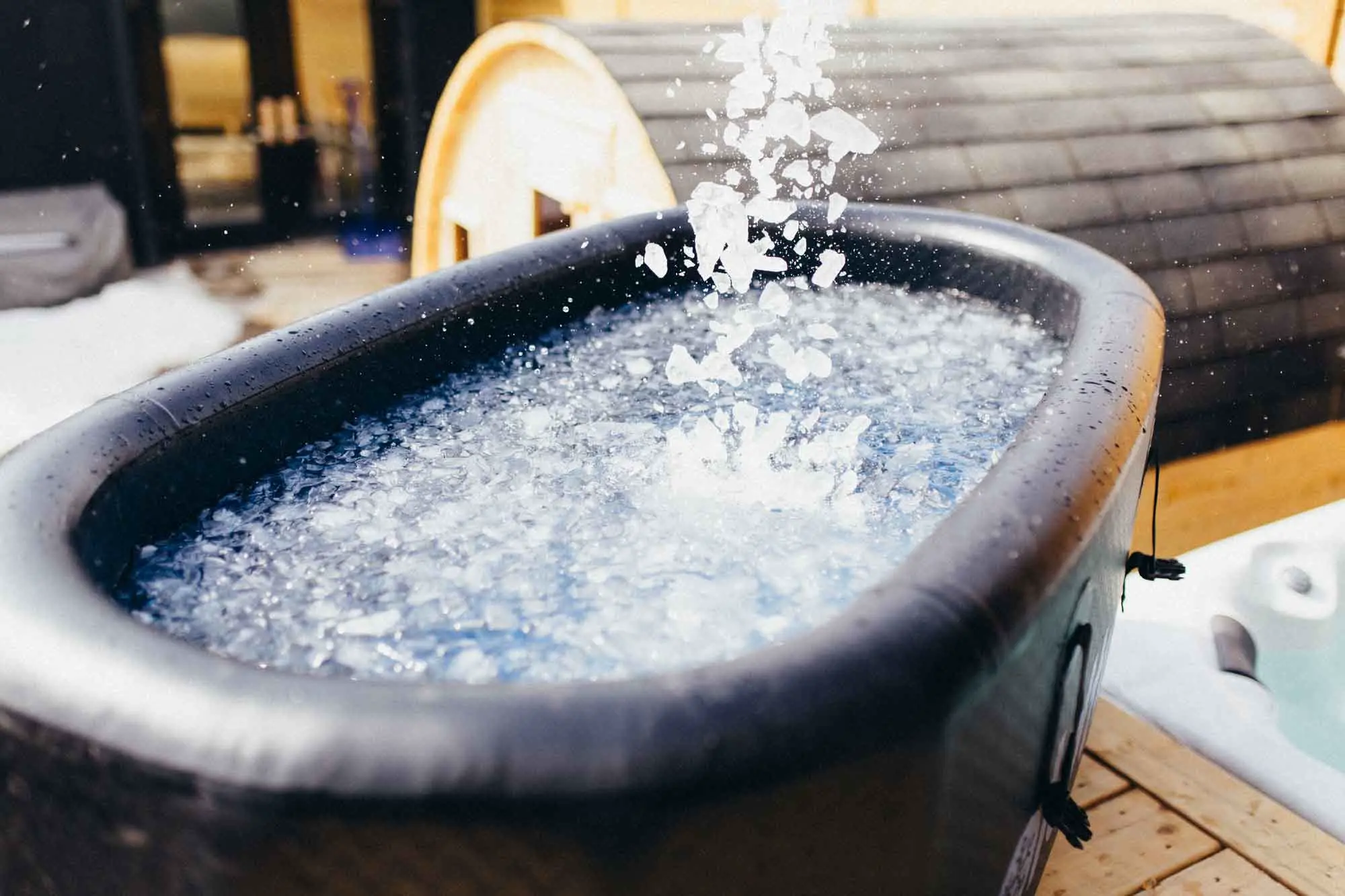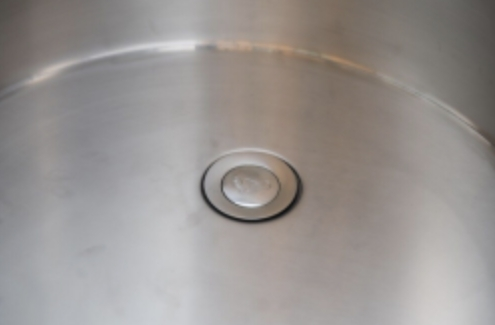Como manter a água do banho de gelo limpa?
Como manter a água do banho de gelo limpa?
Introdução:

Banhos de gelo have been a longstanding practice among athletes, physical therapists, and those seeking recovery and therapeutic benefits. Taking a plunge into cold water after intense physical exertion can help ease muscle soreness, reduce inflammation, and facilitate overall recovery. No entanto, it’s crucial to recognize the importance of maintaining clean ice bathwater to ensure its effectiveness and prevent potential health risks.
The Importance of Maintaining Clean Ice Bathwater:
Cleanliness isn’t just about appearance when it comes to ice bathwater; it plays a vital role in preserving the therapeutic properties and safety of the experience. When immersed in water, our bodies naturally release oils and sweat, which can contaminate the bathwater. Without proper maintenance, these contaminants can accumulate over time, leading to bacterial growth and an unsanitary environment.
Além disso, by keeping ice bathwater clean, you are safeguarding against potential skin infections or irritations that could result from exposure to harmful bacteria or other contaminants. Given that open wounds or scratches are common among athletes or individuals involved in intense physical activities, dirty ice baths pose a significant risk for infection if not appropriately cared for.
Understanding the Factors Affecting Ice Bathwater Cleanliness
Contamination Sources
When people immerse themselves in an ice bath, the natural oils and sweat from their bodies accumulate in the water, creating a breeding ground for bacteria and other microorganisms. If left untreated, these substances not only affect the cleanliness of the water, but also pose potential health risks.
Additionally, environmental contaminants such as dust and dirt can find their way into ice bath water. Even if the indoor environment is controlled, these particles can enter through open windows or ventilation systems. Once in the water, they increase the risk of contamination and affect the purity of the water.
This can produce a bad ice bath experience.
Microbial Growth in Water
Ice bath water provides an ideal environment for microbial growth due to its low temperature and nutrients from human excreta and external contaminants. Bacteria are the primary microorganisms that proliferate in these conditions and, if left unchecked, can multiply rapidly, leading to infections or skin-related problems in people who use contaminated ice baths.
Algae and fungi are also common organisms found in poorly maintained ice bath water and can pose a health hazard. Algae thrive in sunlight, while fungi prefer shady areas; preventative measures are essential to curbing their growth and maintaining a clean and safe environment for ice bath therapy.
Health Risks Associated with Contaminated Water
Using contaminated ice bath water can lead to various health risks, with bacterial infections being a common consequence. Bacteria like Pseudomonas aeruginosa or Staphylococcus aureus can cause skin infections such as folliculitis or cellulitis. Individuals with open wounds or compromised immune systems are more susceptible to severe infections.
Contaminated ice bath water can also promote the growth of harmful algae. Some algae produce toxins, such as cyanobacteria (blue-green algae), which can cause adverse effects if ingested or in contact with the skin. If accidentally swallowed during immersion, these toxins can cause gastrointestinal problems, allergic reactions, and even neurological symptoms.
Conclusão
Understanding the factors that affect the cleanliness of ice bath water plays an important role in enhancing physical preparedness. Ensuring that ice baths are clean and sanitary allows us to enjoy optimal recovery and healing.
3 Ways to Keep Ice Bath Water Clean
1. Ice bath tubs selection

- Choose a suitable tub or container with smooth surfaces for easy cleaning, preferably made of non-porous materials like stainless steel or high-quality plastic.
- Avoid rough-textured surfaces to prevent the harboring of dirt and bacteria.
- Ensure proper drainage to prevent stagnant water, which can become a breeding ground for harmful microorganisms.
- Use a drain plug or position the setup to allow water to flow freely out of the tub or container after use.
2. Personal Hygiene Practices Before Entering the Ice Bath

- Take a thorough shower with warm water and soap before entering the ice bath to remove any residual products from your body.
- Pay attention to areas prone to sweat accumulation, such as underarms and groin regions.
- Avoid excessive use of lotions or oils before entering, as they can create an oily film on the skin, potentially contaminating the water.
- If moisturizing before the session, allow sufficient time for absorption.
3. Choosing the right water filter

- Chlorine-Based Disinfectants:
Use chlorine tablets or granules designed for hot tubs or pools, following the manufacturer’s instructions to add appropriate amounts.
Liquid bleach can be an alternative disinfectant option, but dilute it in water to achieve the correct concentration. Handle bleach with care. - Ultraviolet (ultravioleta) Light Treatment:
Install a UV sterilizer in your ice bath system, utilizing UV-C light to neutralize harmful microorganisms in the water. - Ozone Generators:
Use ozone generators to inject ozone gas into the water, providing powerful disinfectant properties against bacteria, viruses, e contaminantes.
This process adds an extra layer of protection against microbial growth in ice bathwater.
Conclusão:
Maintaining clean ice bathwater demands consistent effort, yet the rewards in terms of hygiene and overall wellness are substantial. By comprehending the factors influencing water cleanliness and incorporating proper maintenance routines, you can establish an environment conducive to effective recovery and therapeutic benefits. It’s essential to recognize that cleanliness is not only vital for personal health but also plays a role in preserving the integrity of your equipment.
After each use, make it a practice to sanitize your ice bath using appropriate disinfectants and adhere to recommended cleaning procedures for enduring cleanliness. The next time you step into an ice bath with confidence, relish the knowledge that you’re immersing yourself in icy bliss in a safe and hygienic manner, contributing to your physical well-being!
O negócio diante dele
Como manter a água do banho de gelo limpa?
Introdução:

Banhos de gelo have been a longstanding practice among athletes, physical therapists, and those seeking recovery and therapeutic benefits. Taking a plunge into cold water after intense physical exertion can help ease muscle soreness, reduce inflammation, and facilitate overall recovery. No entanto, it’s crucial to recognize the importance of maintaining clean ice bathwater to ensure its effectiveness and prevent potential health risks.
The Importance of Maintaining Clean Ice Bathwater:
Cleanliness isn’t just about appearance when it comes to ice bathwater; it plays a vital role in preserving the therapeutic properties and safety of the experience. When immersed in water, our bodies naturally release oils and sweat, which can contaminate the bathwater. Without proper maintenance, these contaminants can accumulate over time, leading to bacterial growth and an unsanitary environment.
Além disso, by keeping ice bathwater clean, you are safeguarding against potential skin infections or irritations that could result from exposure to harmful bacteria or other contaminants. Given that open wounds or scratches are common among athletes or individuals involved in intense physical activities, dirty ice baths pose a significant risk for infection if not appropriately cared for.
Understanding the Factors Affecting Ice Bathwater Cleanliness
Contamination Sources
When people immerse themselves in an ice bath, the natural oils and sweat from their bodies accumulate in the water, creating a breeding ground for bacteria and other microorganisms. If left untreated, these substances not only affect the cleanliness of the water, but also pose potential health risks.
Additionally, environmental contaminants such as dust and dirt can find their way into ice bath water. Even if the indoor environment is controlled, these particles can enter through open windows or ventilation systems. Once in the water, they increase the risk of contamination and affect the purity of the water.
This can produce a bad ice bath experience.
Microbial Growth in Water
Ice bath water provides an ideal environment for microbial growth due to its low temperature and nutrients from human excreta and external contaminants. Bacteria are the primary microorganisms that proliferate in these conditions and, if left unchecked, can multiply rapidly, leading to infections or skin-related problems in people who use contaminated ice baths.
Algae and fungi are also common organisms found in poorly maintained ice bath water and can pose a health hazard. Algae thrive in sunlight, while fungi prefer shady areas; preventative measures are essential to curbing their growth and maintaining a clean and safe environment for ice bath therapy.
Health Risks Associated with Contaminated Water
Using contaminated ice bath water can lead to various health risks, with bacterial infections being a common consequence. Bacteria like Pseudomonas aeruginosa or Staphylococcus aureus can cause skin infections such as folliculitis or cellulitis. Individuals with open wounds or compromised immune systems are more susceptible to severe infections.
Contaminated ice bath water can also promote the growth of harmful algae. Some algae produce toxins, such as cyanobacteria (blue-green algae), which can cause adverse effects if ingested or in contact with the skin. If accidentally swallowed during immersion, these toxins can cause gastrointestinal problems, allergic reactions, and even neurological symptoms.
Conclusão
Understanding the factors that affect the cleanliness of ice bath water plays an important role in enhancing physical preparedness. Ensuring that ice baths are clean and sanitary allows us to enjoy optimal recovery and healing.
3 Ways to Keep Ice Bath Water Clean
1. Ice bath tubs selection

- Choose a suitable tub or container with smooth surfaces for easy cleaning, preferably made of non-porous materials like stainless steel or high-quality plastic.
- Avoid rough-textured surfaces to prevent the harboring of dirt and bacteria.
- Ensure proper drainage to prevent stagnant water, which can become a breeding ground for harmful microorganisms.
- Use a drain plug or position the setup to allow water to flow freely out of the tub or container after use.
2. Personal Hygiene Practices Before Entering the Ice Bath

- Take a thorough shower with warm water and soap before entering the ice bath to remove any residual products from your body.
- Pay attention to areas prone to sweat accumulation, such as underarms and groin regions.
- Avoid excessive use of lotions or oils before entering, as they can create an oily film on the skin, potentially contaminating the water.
- If moisturizing before the session, allow sufficient time for absorption.
3. Choosing the right water filter

- Chlorine-Based Disinfectants:
Use chlorine tablets or granules designed for hot tubs or pools, following the manufacturer’s instructions to add appropriate amounts.
Liquid bleach can be an alternative disinfectant option, but dilute it in water to achieve the correct concentration. Handle bleach with care. - Ultraviolet (ultravioleta) Light Treatment:
Install a UV sterilizer in your ice bath system, utilizing UV-C light to neutralize harmful microorganisms in the water. - Ozone Generators:
Use ozone generators to inject ozone gas into the water, providing powerful disinfectant properties against bacteria, viruses, e contaminantes.
This process adds an extra layer of protection against microbial growth in ice bathwater.
Conclusão:
Maintaining clean ice bathwater demands consistent effort, yet the rewards in terms of hygiene and overall wellness are substantial. By comprehending the factors influencing water cleanliness and incorporating proper maintenance routines, you can establish an environment conducive to effective recovery and therapeutic benefits. It’s essential to recognize that cleanliness is not only vital for personal health but also plays a role in preserving the integrity of your equipment.
After each use, make it a practice to sanitize your ice bath using appropriate disinfectants and adhere to recommended cleaning procedures for enduring cleanliness. The next time you step into an ice bath with confidence, relish the knowledge that you’re immersing yourself in icy bliss in a safe and hygienic manner, contributing to your physical well-being!
Sobre o autor

Bem-vindo ao nosso blog! Meu nome é Peter e sou o autor principal deste blog. Como praticante de recuperação esportiva e com profundos interesses e experiência.
Tenho o compromisso de apresentar conceitos complexos de maneira clara e concisa, e permitir que os leitores compreendam e apliquem melhor esse conhecimento por meio de pesquisas aprofundadas e compartilhamento de experiências.
Obrigado por ler e pelo seu apoio! Se você tiver dúvidas ou sugestões sobre algum conteúdo, sinta-se à vontade para entrar em contato comigo. Estou ansioso para compartilhar mais informações interessantes e úteis com você e crescer juntos nesta jornada de conhecimento!
